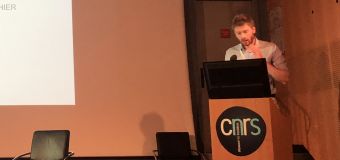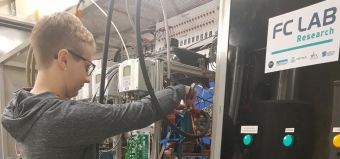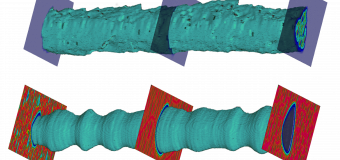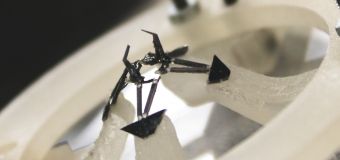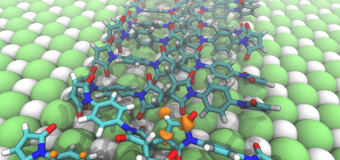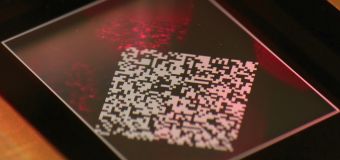You are here
Does the i-motif structure of DNA exist in the cell?
As part of an interdisciplinary project involving FEMTO-ST, a new scientific study is reopening the debate on the very existence of these structures in DNA and their potential therapeutic interest in cell biology for the treatment of certain cancers.
More than 60 years ago, the double helix structure of DNA was discovered and was to have a major impact on molecular biology research for decades to come. In recent years, however, other DNA structures have aroused the enthusiasm of researchers, in particular tetrameric structures such as G-quadruplexes (G4s) and i-patterns.
G4s, consisting of a stack of guanine tetrads, are obtained when the DNA sequence is rich in guanines. The presence of these G4 structures has been demonstrated for many years and they are an avenue being explored for the treatment of cancers. If one strand is guanine-rich, its complementary strand is cytosine-rich. It has been shown in vitro that these cytosine-rich sequences are also capable under acidic conditions (pH<6) of folding into tetrameric structures to form i-motifs.
However, the formation of these i-motif structures within cells is highly controversial due to the need for an acidic pH. Recently, an Australian team developed a new antibody (i-Mab) to detect the presence of i-motif DNA at cellular level and thus prove its presence.
This article, published in ‘Nucleic Acids Research’, presents a new study of the recognition properties of this i-Mab antibody and calls into question previous conclusions. The researchers re-evaluated the recognition properties of this antibody at acidic and physiological pH, supplementing them in particular with a study of other oligonucleotides rich in cytosine but not forming an i-motif. They demonstrated that the i-Mab antibody not only recognised the i-motif conformation but also other sequences rich in cytosine but unable to form an i-motif. More specifically, the results suggest that the binding of iMab to oligonucleotides is governed by the presence of at least two consecutive cytosines. In addition, FRET analyses indicate that interaction with iMab results in unfolding of the i-motif structures even under acidic conditions, in a manner similar to that observed with hnRNP K, a single-stranded DNA-binding protein.
The results strongly suggest that the iMab antibody binds to blocks of 2 to 3 cytosines in single-stranded DNA and call for a more cautious interpretation of the results obtained with this antibody.
This work was carried out as part of the ANR ICARE (ANR-21-CE44-0005) and PRIME'80 programmes, involving researchers from the Department of Molecular Chemistry (CNRS/University of Grenoble Alpes) in close collaboration with the Institut Curie (CNRS/Paris Saclay), the Institute of Pharmacology and Structural Biology (CNRS/University of Toulouse) and the FEMTO-ST Institute (CNRS/University of Bourgogne-Franche-Comté).
This publication (https://doi.org/10.1093/nar/gkae531) a was the subject of an article in CNRS chimie
Contact FEMTO-ST : Jérôme Dejeu
Award



